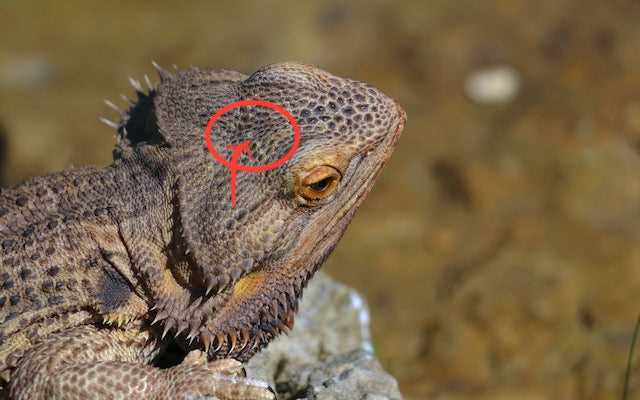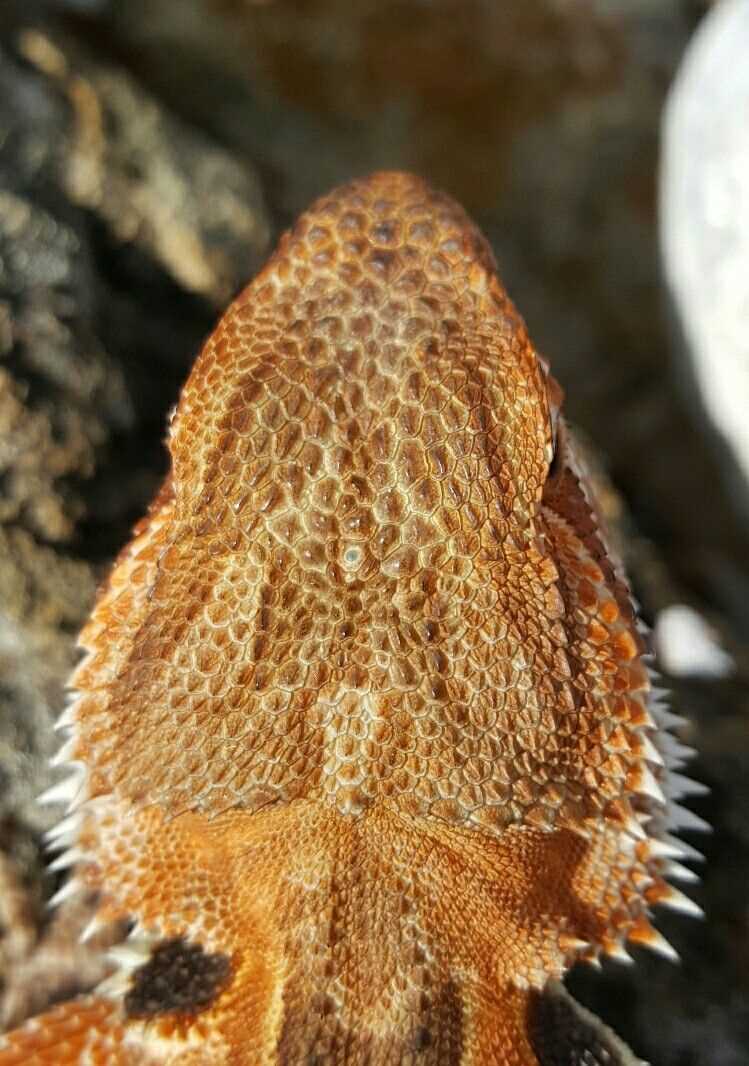
As a pet owner, it is essential to understand the unique characteristics and functions of your reptile companion, especially if you have a bearded dragon. One fascinating feature that sets bearded dragons apart from other lizards is their parietal eye. This small, scale-covered eye is located on the top of their head and plays a vital role in their survival.
The parietal eye serves as an internal clock for bearded dragons, helping them regulate their behavior and physiological processes. It responds to changes in lighting conditions, such as detecting the onset of dawn and dusk. This photoreceptive organ helps bearded dragons adjust their activity levels, feeding patterns, and even reproductive cycles in response to environmental cues.
Characteristics of the Bearded Dragon Parietal Eye

The parietal eye of the bearded dragon is characterized by its triangular shape and translucent appearance. It is situated in the middle of the bearded dragon’s parietal bone, which is a part of their skull structure. Unlike the two primary eyes located on the front of the head, the parietal eye has a distinctive scale-like covering and lacks a mobile eyelid. This eye is usually light-sensitive and can detect changes in light intensity, making it essential for the bearded dragon’s survival in its natural habitat.
One interesting feature of the parietal eye is its ability to perceive different wavelengths of light, including ultraviolet (UV) light. This capability allows the bearded dragon to have a broader visual spectrum compared to humans and other animals. It helps them navigate their surroundings, identify prey, and recognize potential threats in their environment.
The bearded dragon’s parietal eye also plays a role in thermoregulation. It helps them sense changes in temperature by detecting infrared radiation. This enables them to locate warm spots or basking areas in their terrarium, where they can regulate their body temperature effectively.
During periods of rest, the parietal eye remains closed, and it is only active when the bearded dragon is alert or exposed to certain stimuli. Some studies suggest that the parietal eye may also be involved in regulating their circadian rhythm, allowing them to distinguish between day and night.
Functions of the Bearded Dragon Parietal Eye
- Sensitivity to light: The parietal eye contains cells called photoreceptors that are sensitive to light. This enables the bearded dragon to detect changes in light intensity and adjust its behavior accordingly. For example, the lizard can use its parietal eye to sense the approach of predators or changes in lighting conditions, allowing it to take appropriate defensive actions or seek shelter.
- Circadian rhythm regulation: The bearded dragon parietal eye plays a crucial role in regulating the lizard’s circadian rhythm, which is the internal biological clock that controls various physiological processes. The photoreceptor cells in the parietal eye are particularly sensitive to blue light, which helps the lizard maintain an accurate sense of time and adjust its daily activities accordingly.
- Temperature regulation: Another important function of the parietal eye is its involvement in thermoregulation. The photoreceptor cells in the parietal eye can detect changes in ambient temperature, allowing the bearded dragon to locate optimal basking spots for sunbathing or seek shade when temperatures become too high.
- Mating and reproductive behavior: The parietal eye also plays a role in the bearded dragon’s mating and reproductive behavior. During the breeding season, the parietal eye becomes more active and may assist in determining the lizard’s sexual maturity and receptiveness to mating.

I’m Lena Adams—a product of an unconventional upbringing in the African wilderness. My father, a daring explorer of African wildlife, sparked my fascination with reptiles, a passion that intertwined with the tragic loss of my mother during an expedition, leaving an indelible mark on my life. Driven to understand the creatures that captivated my parents, I embarked on my journey, sharing insights about reptiles, frogs, and lizards on my website. Through my explorations and conservation efforts, I honour my family’s legacy while seeking connections—to the creatures, nature, and the mother whose presence I yearn to understand.
